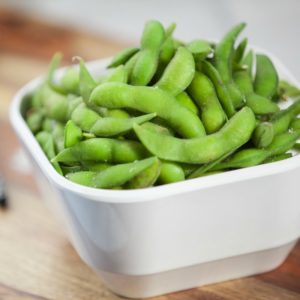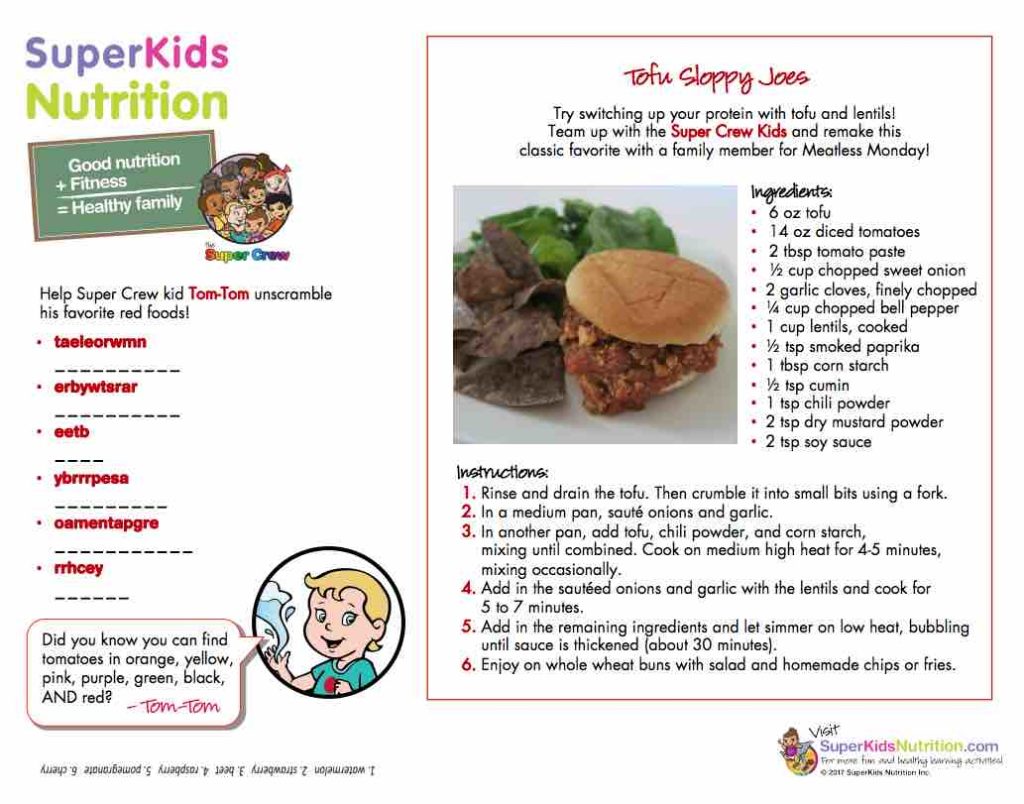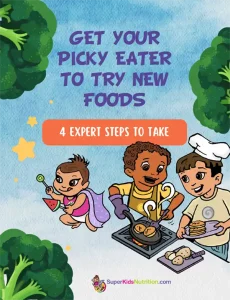
Yes, soy is safe for kids and can be part of a healthy balanced diet for boys, girls, and families!
Soy, along with a variety of legumes and other plant-based foods can be part of a healthy kids’ diet. Soybeans are in the pea family and provide high-quality protein. Soy contains zero cholesterol (since it is a plant food), is low in saturated fat, and is a good source of fiber, iron, calcium, zinc, and B vitamins. As part of a diet low in saturated fat and cholesterol, soy may reduce the risk of heart disease. Soy contains polyphenols called isoflavones, a type of phytochemical. Genistein, daidzein, and glycitein are types of isoflavones abundant in soy but found in smaller quantities also in other foods (1,2). Some of these phytochemicals may help protect against cancer.
Soy’s Versatility
It’s such a versatile food and can be made into soy milk, flour, powder, tempeh, miso, tofu, soy sauce, textured soy protein, vegetarian meat and cheese replacements. These different textures and shapes can make it fun to experiment with soy for kids.
What’s the Deal with Processed Soy
Highly processed soy, like soy sauce, does not contain isoflavones (a type of beneficial phytochemical). Also, many overly processed soy “meats” may be lower in phytochemicals. Sometimes you’ll see soy added to processed foods like sausages, chicken nuggets, or deli meats -this doesn’t make these foods healthier. Try to choose soy in its closer to natural forms, like the ones listed below.
Ways to Enjoy Soy
Soy comes in many different forms such as tofu, soybeans, soymilk, and tempeh. If you’ve tried to feed your kid one type of soy and he didn’t like it, try another option! Soy is safe for kids, so you’re free to experiment!
Here are several more ways to enjoy soy with the kids. One of the Super Crew’s favorites is crumbled tofu. It can be tasty alone or combined with ground turkey or chicken to save on cost and increase lean protein sources. Check out this fun recipe activity – Super Crew kid Tom-Tom’s Tofu Sloppy Joes.
Non-GMO Soy
If you’re concerned about genetically modified foods (GMOs), choose organic soy, which is never genetically modified. You can also choose foods labeled non-GMO soy. Some store brands, like Trader Joe’s, are GMO-free.
Soy’s Healthy Plant Compounds
Don’t get confused when you hear that soy contains phytoestrogens -these are plant substances, not hormones. Isoflavones are also called phytoestrogens because of how they behave in the body. They do have a similar structure to human estrogen and can bind to the human estrogen receptor. Because phytoestrogens can bind to estrogen receptor sites they can “replace” some of your own estrogen with less potent plant phytoestrogens. This action might reduce the risk of developing certain types of cancer!
However, most Americans don’t eat enough soy to reap the health benefits -and therefore we get fewer isoflavones per day compared to typical Asian diets. A typical American eats only 1-3 mg of isoflavones per day, compared to the 30-60 mg per day that is typical in Asian diets (3). Including soy in your child’s diet may lower the risk of cancer later, so try to include soy in your family’s diet weekly. Like all foods, eat in moderation, not excess. To read more about soy and other research related to cancer, see foods that fight cancer.












